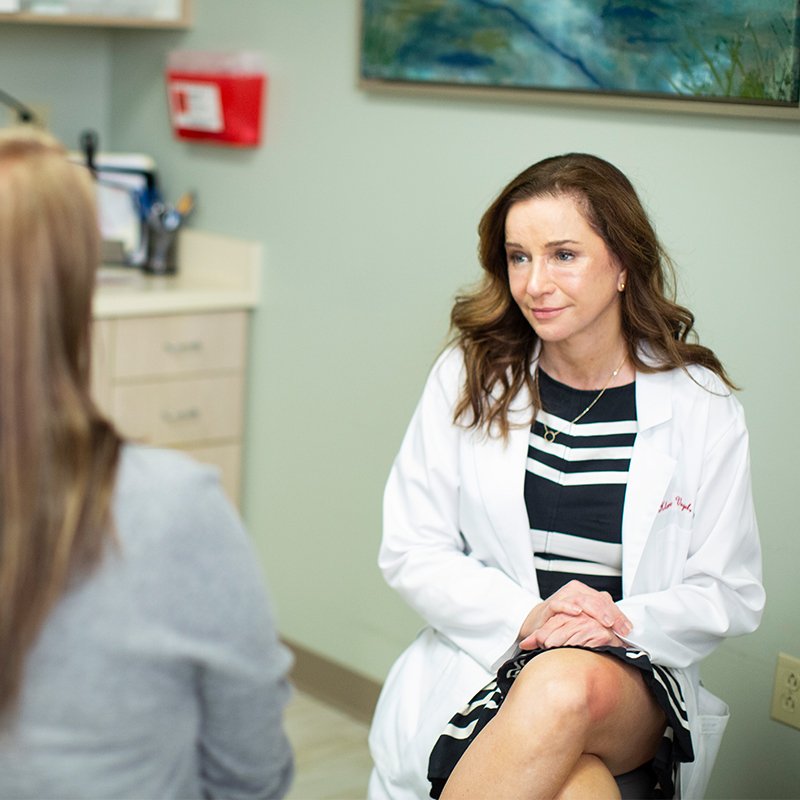Hysterectomy

Overview
What is a Hysterectomy?
Symptoms
A hysterectomy is an operation to remove the uterus. You may need a hysterectomy if you have the following:
- Uterine fibroids that cause pain, bleeding or other problems
- Endometriosis
- Heavy or unusual vaginal bleeding
- Cancer of the uterus or cervix
- Chronic pelvic pain
- Uterine prolapse
Treatments
Depending on your particular diagnosis and health history, your doctor may perform the following procedures for a hysterectomy:
- A total hysterectomy that removes all of the uterus, including the cervix
- Partial hysterectomy that removes just the upper part of the uterus with the cervix not removed. A radical hysterectomy removes all of the uterus, cervix, tissue on both sides of the cervix and the upper part of the vagina. This is often used to treat certain types of cancer.
Why
Why Have a Hysterectomy?
Your OBGYN may suggest less invasive treatment options to manage symptoms prior to recommending a hysterectomy. However, certain conditions, such as cancer, require a hysterectomy to achieve cure. Sometimes it is appropriate to remove the ovaries and Fallopian tubes at the same time as a hysterectomy. Your doctor can discuss these options with you to determine the right course of treatment.
Risks
Hysterectomy Potential Risks and Complications
Most women who get a hysterectomy have no serious problems or complications. However, a hysterectomy is major surgery and it’s not without its risks, including:
- Rare operative risks such as wound infections, blood clots, hemorrhage and injury to surrounding organs
- Urinary incontinence
- Vaginal prolapse, where part of your vagina is coming out of the body
- Chronic pain

What to Expect
What to Expect During a Hysterectomy
Your Saint John’s Physician Partners gynecologist will make sure you receive and understand the specific instructions on how to prepare, what to expect and postoperative instructions. Be sure to address any questions or concerns with your doctor. We have answers and are here for you.
There are several different approaches to a hysterectomy procedure: a traditional or open surgery and minimally invasive procedures such as laparoscopy or robotic gynecological surgery.
- Open or abdominal surgery is the most common where your doctor makes an incision across your belly and removes the uterus through this incision. You will usually spend 2-3 days in the hospital postoperative and there will be a visible scar.
- Vaginal hysterectomy involves the doctor making a cut in the vagina and removing the uterus through this incision, which usually allows for easier recovery and less postoperative pain
- Laparoscopic hysterectomy is done using a laparoscope, which is a tube with a lighted camera, and surgical tools inserted through several small cuts made in the belly and one small cut made in the belly button. Because the incisions are smaller, recovery is easier than after an abdominal hysterectomy
- Robot-assisted laparoscopic hysterectomy is similar to laparoscopic hysterectomy but your doctor uses a computer assisted robotic system of surgical tools from outside the body.
Recovering from a hysterectomy takes time and women stay in the hospital anywhere from a few hours to a few days after surgery depending on the procedure performed. The time it takes you to recover will depend on the type and reason for the surgery. For abdominal or open surgery, full recovery may take from four to six weeks. For vaginal, laparoscopic or robotic surgery, full recovery may take from three to four weeks. Once your doctor has determined you have healed completely, you may resume normal activity, including sexual intercourse. You cannot become pregnant after a hysterectomy.
Specialists
















